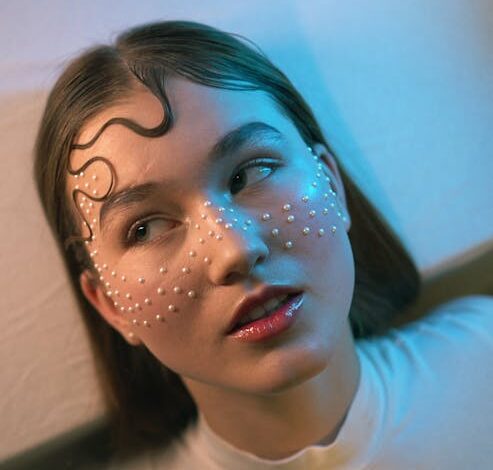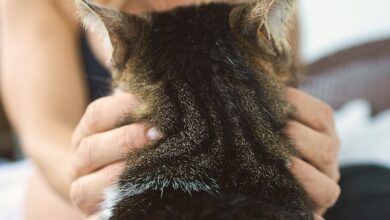New Eye-Scan Breakthrough Could Make Glaucoma Detection More Reliable

New Eye-Scan Breakthrough Could Make Glaucoma Detection More Reliable
Estimated Reading Time: 6 minutes
- A revolutionary eye-scan technology, leveraging RNFL reflectance in OCT, promises earlier and more reliable glaucoma detection.
- This innovation identifies cellular distress in the optic nerve before traditional methods detect physical thinning, allowing for timely intervention.
- The “Post-NFL-Bright” metric significantly enhances diagnostic accuracy and repeatability, a crucial advancement from the Casey Eye Institute.
- Early and precise detection is vital to prevent irreversible vision loss from glaucoma, often called the “silent thief of sight.”
- Proactive steps like discussing advanced diagnostics with your eye care professional and regular comprehensive eye exams are crucial.
- New Eye-Scan Breakthrough Could Make Glaucoma Detection More Reliable
- Key Takeaways
- The Glaucoma Challenge: Detecting the Invisible Threat
- A New Glimpse: Unveiling RNFL Reflectance in OCT Scans
- Practical Impact & Your Next Steps
- Actionable Steps for Your Eye Health
- Conclusion
- Frequently Asked Questions
Glaucoma, often called the “silent thief of sight,” damages the optic nerve without early symptoms, making timely detection critical for preserving vision. Traditional methods, while valuable, sometimes identify damage only after it has progressed significantly. New research, however, offers a beacon of hope: a groundbreaking eye-scan technology promising more reliable and earlier glaucoma detection, potentially saving countless individuals from irreversible vision loss.
The Glaucoma Challenge: Detecting the Invisible Threat
This group of eye conditions attacks the optic nerve, the vital cable connecting your eye to your brain. High eye pressure is a common culprit, but the disease can progress stealthily. By the time visual changes are noticed, significant, permanent damage often exists. Current diagnostics frequently rely on measuring the thickness of the Retinal Nerve Fiber Layer (RNFL), which, unfortunately, can be a relatively late indicator. The scientific community has long sought more sensitive biomarkers to catch glaucoma in its earliest, most treatable stages.
A New Glimpse: Unveiling RNFL Reflectance in OCT Scans
The innovation lies in a more sophisticated analysis of Optical Coherence Tomography (OCT) scans. OCT is a non-invasive imaging technique that uses light to produce detailed cross-sectional images of the retina and optic nerve. While conventional OCT measures RNFL thickness, this breakthrough focuses on RNFL reflectance—how light bounces off these crucial nerve fibers. Changes in reflectance can signal cellular distress even before physical thinning occurs, acting as an earlier warning system.
The foundation of this advancement comes from meticulous research:
Authors:
- Kabir Hossain, PhD, Casey Eye Institute, Oregon Health & Science University;
- Ou Tan, PhD, Casey Eye Institute, Oregon Health & Science University;
- Po-Han Yeh, Casey Eye Institute, Oregon Health & Science University;
- Jie Wang, Casey Eye Institute, Oregon Health & Science University;
- Elizabeth White, Casey Eye Institute, Oregon Health & Science University;
- Dongseok Choi, Casey Eye Institute, Oregon Health & Science University;
- David Huang, Casey Eye Institute, Oregon Health & Science University.
Table of Links
- Abstract and 1. Introduction
- Methods
- 2.1 Participants
- 2.2 Data Acquisition
- 2.3 NFL Reflectance Analysis
- Results
- 3.1 Neutral Density Filter Experiment
- 3.2 FSOCT Clinic Data Analysis
- Discussion
- Conclusions and References
Abstract
Purpose: Reliability for Nerve Fiber Layer Reflectance Using Spectral Domain Optical Coherence Tomography (OCT)
Methods: The study utilized OCT to scan participants with a cubic 6×6 mm disc scan. NFL reflectance were normalized by the average of bands below NFL and summarized. We selected several reference bands, including the pigment epithelium complex (PPEC), the band between NFL and Bruch’s membrane (Post-NFL), and the top 50% of pixels with higher values were selected from the Post-NFL band by Post-NFL-Bright. Especially, we also included NFL attenuation coefficient (AC), which was equivalent to NFL reflectance normalized by all pixels below NFL. An experiment was designed to test the NFL reflectance against different levels of attenuation using neutral density filter (NDF). We also evaluated the within-visit and between-visit repeatability using a clinical dataset with normal and glaucoma eyes.
Results: The experiment enrolled 20 healthy participants. The clinical dataset selected 22 normal and 55 glaucoma eyes with at least two visits form functional and structural OCT (FSOCT) study. The experiment showed that NFL reflectance normalized PPEC Max and Post-NFL-Bright had lowest dependence, slope=- 0.77 and -1.34 dB/optical density on NDF levels, respectively. The clinical data showed that the NFL reflectance metrics normalized by Post-NFL-Bright or Post-NFL-Mean metrics had a trend of better repeatability and reproducibility than others, but the trend was not significant. All metrics demonstrated similar diagnostic accuracy (0.82-0.87), but Post-NFL-Bright provide the best result.
Conclusions: The NFL reflectance normalized by the maximum in PPEC had less dependence of the global attenuation followed by Post-NFL-Bright, PPEC/Mean, Post-NFL-Mean and NFL/AC. But NFL reflectance normalized by Post-NFL-Bright had better result in two datasets.
1 Introduction
Retinal Nerve Fiber Layer (RNFL) thickness, phase retardation, and reflectance are important biomarkers for glaucoma diagnostics [1]. Especially NFL thickness by Optical Coherence Tomography (OCT) has been a well-established method to monitor glaucoma progression and confirmation. However, for mass screening, NFL thickness is not suitable to be used alone [2]. It could be noted, Retinal ganglion cells (RGC) and their axons are significantly damaged by glaucoma which leads to visual field abnormalities and vision loss [1,3]. A study shows that RNFL reflectance is more sensitive to glaucoma damage than a change in RNFL thickness [3]. Further, a decrease in RNFL reflectance occurs before thinning of the RNFL [6]. Hence, an investigation into the RNFL reflectance analysis technique is imperative.
NFL reflectance was derived from OCT image is sensitive to different attenuations due to the optical scattering properties, e.g., media opacity, poor focusing, and ocular media opacities. These effects are often compensated by reference layers [1,4,5]. In [1] and [4], the RNFL reflectivity is normalized by the Retinal Pigment Epithelium (RPE). In [1] and [4], the RNFL reflectivity is normalized by the Retinal Pigment Epithelium (RPE). However, Gardiner SK at el. [5] showed that NFL reflectance corrected by the Post-NFL band had better repeatability than the RPC band. It could be noted, upon observation, we noticed that the Post-NFL band has a darker layer, which could be a disadvantage. However, by selecting the top 50% of pixels, we can opt out of those regions and potentially gain better advantages. Therefore, we selected the top 50% of pixels from the Post-NFL band and named it Post-NFL-Bright. Moreover, we observed that more layers below the NFL provide better repeatability; hence we considered the summation of attenuation coefficient (AC). The attenuation coefficient is an optical property that explains the attenuation of light that occurs due to the scattering and absorption properties of tissue. Therefore, the determination of the attenuation coefficient provides valuable information on glaucoma. Study [3] shows that the average RNFL attenuation coefficients are fully separable for normal and glaucoma. Several papers [4, 6,7,8] have been published for the quantitative analysis of attenuation coefficients. In this depth-resolved [7] based technique was used to determine RNFL attenuation coefficient maps based on a method that uses the retinal pigment epithelium as a reference layer. We have extended the depth-resolved based method by summation of the attenuation coefficient (AC) in NFL layers (which we called NFL/AC) because we want to compare and evaluate the NFL/AC together with other references (NFL/PPEC, NFL/Post-NFL-Mean and NFL/Post-NFL-Bright). Another reason is that, as mentioned earlier, we observed that more layers provide better repeatability, and the AC used more layers. The primary goal is to identify a metric that not only provides better repeatability and reproducibility but is also reliable across all datasets.
To evaluate the metrics, this study utilized two cohorts of datasets: Neutral Density Filter (NDF) experimental and the Functional and Structural OCT (FSOCT). In the NDF experiment, a set of seven optical density levels were employed, consisting of NDF with optical densities ranging from 0.1 to 0.6, in addition to NDF without any filter. It could be noted here cataract not only affect the peripapillary RNFL thickness but also signal strength [9]. The reasons we used NDF experimental data in the analysis because we wanted to test dependency of the normalized NFL reflectance in each NDF levels. The FSOCT datasets divided on two sets based on number of scans for within-visit repeatability and between visit reproducibility.
In the final analysis, we evaluated the references to test the dependencies of NFL reflectance on NDF levels, as well as the repeatability, reproducibility, and diagnostic accuracy of the FSOCT dataset. We estimated the slope against each NDF level with the NDF dataset and calculated the pooled standard deviation (pooled SD) and AROC for within-visit repeatability, between-visit reproducibility, and diagnostic accuracy, respectively.
This paper is available on arxiv under ATTRIBUTION-NONCOMMERCIAL-NODERIVS 4.0 INTERNATIONAL license.
This pivotal study, conducted by a team from the Casey Eye Institute at Oregon Health & Science University, rigorously tested various methods for normalizing RNFL reflectance. Their innovative “Post-NFL-Bright” metric stands out. By meticulously selecting the brightest pixels from a specific layer below the RNFL, they found a way to enhance data clarity and reliability. Crucially, the researchers concluded that “NFL reflectance normalized by Post-NFL-Bright had better result in two datasets,” demonstrating superior diagnostic accuracy and repeatability, making it a powerful tool for early glaucoma detection.
Practical Impact & Your Next Steps
This breakthrough means a more confident and earlier diagnosis for patients, potentially allowing interventions to begin before significant vision is lost. Imagine someone like Sarah, 48, with a family history of glaucoma. Her standard exams have always been borderline. With “Post-NFL-Bright” analysis, her doctor might detect subtle optic nerve stress years earlier than current methods, allowing for prompt management and preventing the progression that her relatives experienced.
Actionable Steps for Your Eye Health:
- Discuss Advanced Diagnostics: Talk to your eye care professional about new glaucoma detection methods like RNFL reflectance analysis and their availability.
- Maintain Regular Eye Exams: Comprehensive eye check-ups are essential, especially if you have risk factors for glaucoma, enabling early identification of any concerns.
- Know Your Family History: Understand your genetic predisposition to glaucoma, which can guide your doctor in more proactive screening and monitoring.
Conclusion
The advancement in OCT analysis, particularly with RNFL reflectance and the “Post-NFL-Bright” metric, marks a significant stride against glaucoma. By offering earlier, more reliable detection of nerve damage, this innovation holds immense potential to improve patient outcomes and preserve sight. The ongoing dedication of researchers is shaping a future where glaucoma can be accurately identified and managed, often before it can steal vision.
Your vision is invaluable. Take the proactive step today.
Schedule Your Comprehensive Eye Exam Now!
Frequently Asked Questions
What is RNFL reflectance and how is it different from traditional OCT?
RNFL reflectance refers to how light bounces off the Retinal Nerve Fiber Layer. Traditional Optical Coherence Tomography (OCT) primarily measures the *thickness* of the RNFL, which can show damage once it’s progressed. The new technique analyzes *reflectance changes*, which can indicate cellular distress and nerve damage much earlier, often before physical thinning occurs.
Why is early detection of glaucoma so important?
Glaucoma is often called the “silent thief of sight” because it typically has no early symptoms. By the time visual changes are noticeable, significant and irreversible damage to the optic nerve has usually occurred. Early detection allows for prompt treatment and management, which can slow or halt progression, thereby preserving vision.
What is the “Post-NFL-Bright” metric?
The “Post-NFL-Bright” metric is an innovative method developed by researchers at the Casey Eye Institute. It involves meticulously selecting the brightest pixels from a specific layer below the Retinal Nerve Fiber Layer (RNFL) in OCT scans. This selection enhances data clarity and reliability, significantly improving the diagnostic accuracy and repeatability for early glaucoma detection.
Who conducted this groundbreaking research?
This pivotal study was conducted by a dedicated team of researchers from the Casey Eye Institute at Oregon Health & Science University, including Kabir Hossain, Ou Tan, Po-Han Yeh, Jie Wang, Elizabeth White, Dongseok Choi, and David Huang.
What should I do if I’m concerned about glaucoma?
If you’re concerned about glaucoma, especially if you have risk factors like a family history, you should schedule a comprehensive eye exam with your eye care professional. Discuss advanced diagnostic methods like RNFL reflectance analysis and their availability. Regular check-ups are key to early identification and management.





